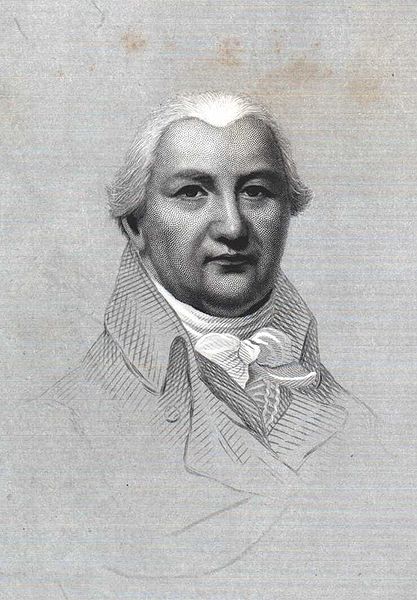<Back to Index>
- Mathematician Charles Hutton, 1737
- Painter Pieter Coecke van Aelst, 1502
- Venetian Patriot Paolo Sarpi, 1552
PAGE SPONSOR

Charles Hutton (14 August 1737 – 27 January 1823) was an English mathematician.
Hutton was born at Newcastle-on-Tyne. He was educated in a school at Jesmond, kept by Mr Ivison, a clergyman of the Church of England. There is reason to believe, on the evidence of two pay-bills, that for a short time in 1755 and 1756 Hutton worked in the colliery at Old Long Benton; at any rate, on Ivison's promotion to a living, Hutton succeeded to the Jesmond school, whence, in consequence of increasing pupils, he removed to Stotes Hall. While he taught during the day at Stotes Hall, he studied mathematics in the evening at a school in Newcastle. In 1760 he married, and began tuition on a larger scale in Newcastle, where he had among his pupils John Scott, afterwards Lord Eldon and Lord High Chancellor of England.
In 1764 he published his first work, The Schoolmasters Guide, or a Complete System of Practical Arithmetic, which in 1770 was followed by his Treatise on Mensuration both in Theory and Practice. In 1772 appeared a tract on The Principles of Bridges, which was suggested by the destruction of Newcastle bridge by a high flood on 17 November 1771. In 1773 he was appointed professor of mathematics at the Royal Military Academy, Woolwich, and in the following year he was elected fellow of the Royal Society of London and reported on Nevil Maskelyne's determination of the mean density and mass of the earth from measurements taken in 1774 – 1776 at Schiehallion in Perthshire. This account appeared in the Philosophical Transactions for 1778, was afterwards reprinted in the second volume of his Tracts on Mathematical and Philosophical Subjects, and procured for Hutton the degree of LL.D. from the University of Edinburgh. He was elected a Fellow of the Royal Societyin July ,1774, and their foreign secretary in 1779, but his resignation in 1783 was brought about by the president Sir Joseph Banks, whose behaviour to the mathematical section of the society was somewhat high-handed.
After his Tables of the Products and Powers of Numbers, 1781, and his Mathematical Tables, 1785, he issued, for the use of the Royal Military Academy, in 1787 Elements of Conic Sections, and in 1798 his Course of Mathematics. His Mathematical and Philosophical Dictionary, a valuable contribution to scientific biography, was published in 1795 (second edition, 1815), and the four volumes of Recreations in Mathematics and Natural Philosophy, mostly a translation from the French, in 1803. One of the most laborious of his works was the abridgment, in conjunction with G. Shaw and R. Pearson, of the Philosophical Transactions. This undertaking, the mathematical and scientific parts of which fell to Hutton's share, was completed in 1809, and filled eighteen volumes quarto. His name first appears in the Ladies Diary (a poetical and mathematical almanac which was begun in 1704, and lasted until 1871) in 1764; ten years later, he was appointed editor of the almanac, a post which he retained until 1817. Previously he had begun a small periodical, Miscellane Mathematica, which extended only to thirteen numbers; subsequently he published in five volumes The Diarian Miscellany which contained large extracts from the Diary. He resigned his professorship in 1807.